Opinion
Christian Viveros-Faune Picks 10 Artists to Watch in 2016
Andrea Fraser, Christian Jankowski, Carrie Mae Weems and more.
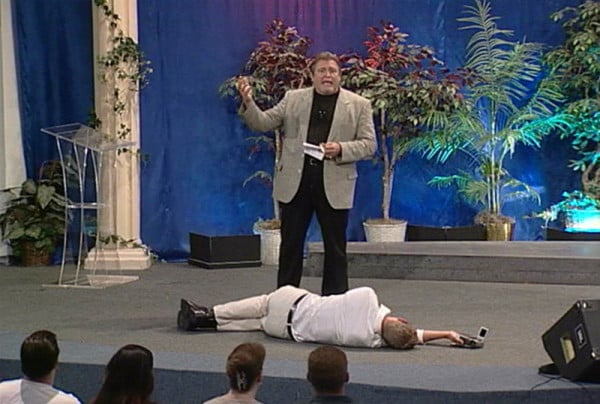
Image: courtesy of Whitney Museum
Andrea Fraser, Christian Jankowski, Carrie Mae Weems and more.

Christian Viveros-Fauné

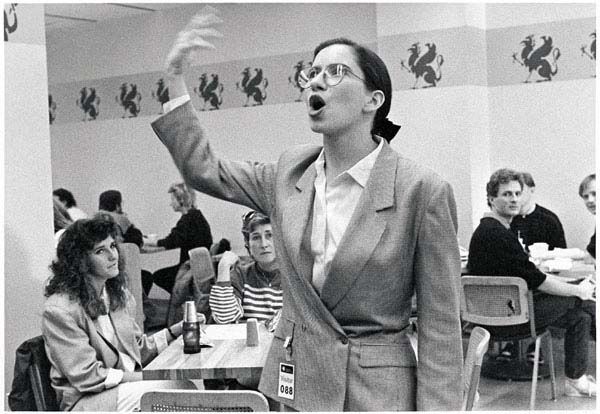
Andrea Fraser, Museum Highlights A Gallery Talk (1989), video still of performance.
Image: courtesy of UCLA. | ART21 Magazine
“Prediction is very difficult,” the Nobel Prize-winning physicist Niels Bohr once said, “especially when it’s about the future.” But here are a few forecasts that are easy calls for 2016. To start with, interest rates will rise, overall art sales will decline, and, come November 8, Hillary Clinton will wipe that stupid smirk off Donald Trump’s Kim Jong Un moonface face. Hurray!
Yet despite the mixed news, the chasm between the haves and have nots will stubbornly remain—both for society in general and the art world in particular—rendering, in turn, the critical and aesthetic arguments of socially-minded folks more relevant than usual. In the words of the late, great theater critic Kenneth Tynan, the culture may at last see itself reflected in expressions of protest: “In the arts, form tends to be conservative, and content to be revolutionary; it is novelty of content that precedes, demands, and imposes novelty of form.” Consider that nugget of wisdom when noodling on the plummeting prices of last year’s model, zombie abstraction.
Below is a short list of some of the artists whose work will undoubtedly gain in stature and influence over the next year and beyond. These figures operate (or once operated) on a parallel track to the art market, without much care for their own auction records or those of other artists. Consequently, their contributions will help strengthen the volatile ideal of artistic value during the triumphs and trials of what promises to be a turbulent 2016.
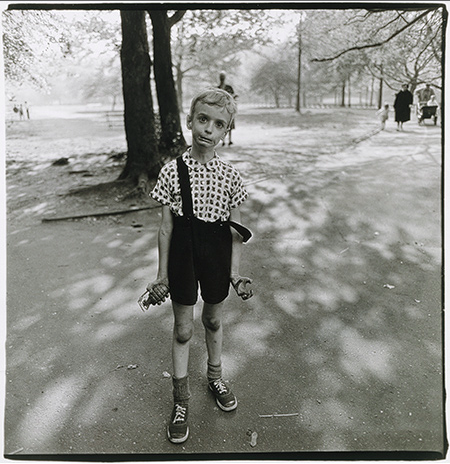
Diane Arbus, Child with Toy Hand Grenade (1962).
Image: courtesy of the Metropolitan Museum of Art
1. Diane Arbus
Diane Arbus’ pictures were included in only a handful of museum exhibitions before she committed suicide in 1971, at the age of 48. By that time, though, she was a contender for world’s most important post-war photographer. Nearly five decades later, this pioneer of photo portraiture gets a rare exhibition of her work at the Met’s new Marcel Breuer outpost on Madison Avenue and 75th Street (July 12–November 27). Drawn from the massive gift the artist’s estate made to the museum in 2007, the show focuses on Arbus’s first seven years of camera work (1956–1962)—a period when the artist developed a style and subject matter that was later to be widely recognized, praised and imitated from Manhattan’s downtown to Donetsk.
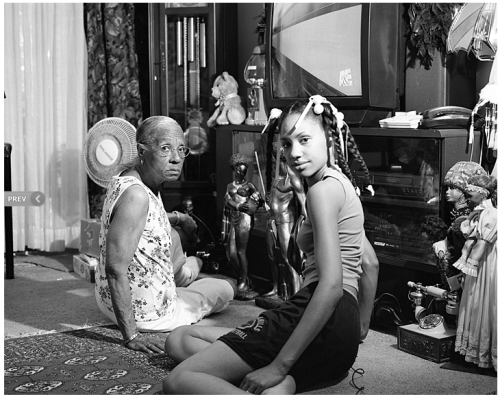
LaToya Ruby Frazier, Grandma Ruby and Me (2005).
Image: courtesy of the Brooklyn Museum
2. LaToya Ruby Frazier
The artist-laureate of rust belt America, LaToya Ruby Frazier was the only photographer among last year’s 24 MacArthur Fellows (the prize awards $625,000 over five years to support a grantee’s work). Frazier explores identities of place, race, and family in images that are a mix of self-portraiture and social narrative. The crumbling landscape of Braddock, Pennsylvania, a once-thriving steel town, forms the backdrop of mostly black and white pictures that relentlessly portray environmental degradation, urban decay and the daily lives of those trapped within its toxic grip. Among other major venues, Frazier has a 2016 solo show in the works for CAPC, Bordeaux.

Andrea Fraser, Soldadera (Scenes from Un banquete en Tetlapayac, a film by Olivier Debroise) (1998/2001).
Image: courtesy of Andrea Fraser and Galerie Nagel Draxler.
3. Andrea Fraser
For the first iteration of the five experimental exhibitions the Whitney Museum of American Art has titled Open Plan, the museum will relinquish its entire fifth-floor space—some 18,200 square feet—to a well-known trouble-maker: the polemicist and multimedia artist Andrea Fraser. From February 26 through March 13, Fraser will present Down the River, a site-specific project that uses audio recorded in a correctional facility to link that institution with another type of establishment undergoing an unprecedented building boom: US museums. If the social, cultural, and geographic divide separating these two sites seems vast, Fraser is among the few artists who can explicate their close connections.
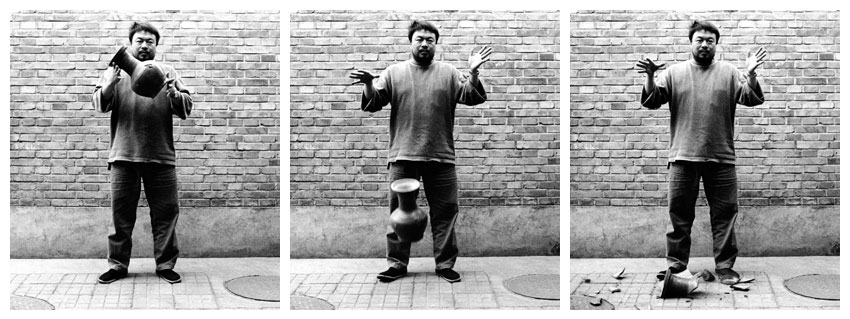
Ai Weiwei.
Image: courtesy of the Brooklyn Museum
4. Ai Weiwei
Artistic powerhouse, architect, political dissident, and all-around shit-stirrer, Ai Weiwei has once again taken it upon himself to turn the spotlight on a major humanitarian cause—this time by setting up a studio on the Greek island of Lesbos to highlight the plight of Syrian refugees. Because the island has become the main point of entry into the EU for hundreds of thousands of people fleeing war and famine, Ai’s studio plans to engage their troubles through multiple artworks, including a memorial to asylum seekers. Ai recently told the Guardian: “As an artist, I have to relate to humanity’s struggles… I never separate these situations from my art.”
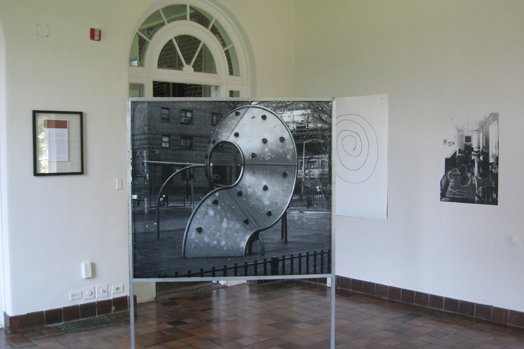
Cameron Rowland installation at Wave Hill (2012).
Image: courtesy of Wave Hill
5. Cameron Rowland
A standout from MoMA PS1’s “Greater New York” and the Studio Museum show “A Constellation” (up through March 6), the young conceptualist turns his use of objects salvaged from online government auctions and decommissioned buildings into weird confrontations with viewers. Rather than represent phenomena or ideas, the artist entreats things to speak for themselves—not as symbols but as parts of a broader socioeconomic infrastructure. A documentarian who doesn’t use images, Rowland’s radically essentialist approach will have several outings in 2016: among them in New York at Artists Space (January 17–March 13) and at Kunsthalle Freiburg in Switzerland.
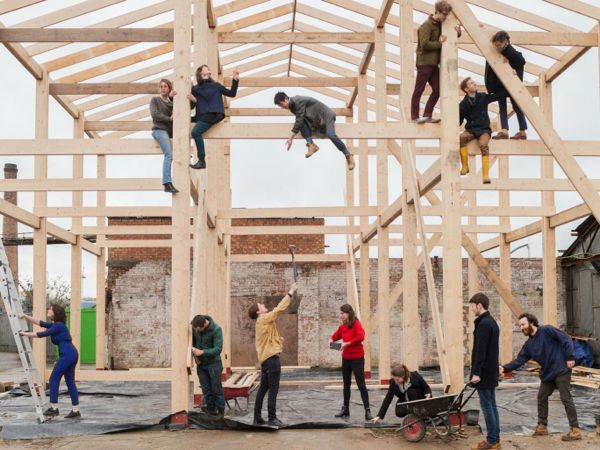
Image: courtesy of Assemble.
6. Assemble Collective
To the surprise of many, the 2015 Turner Prize went to a group of 14 designers who don’t really consider themselves artists. Founded five years ago, Assemble forged a reputation for using scrap material (old wood, recovered tiles) and forgotten venues (an abandoned gas station, the area beneath a highway overpass) to develop temporary DIY architecture. The group has since expanded its vision of what architecture should and shouldn’t do. Their motto “Do, Don’t Make Do” points to the existence of a wider, all-important network of guerrilla architects throughout Europe, such as the influential Spaniard Santiago Cirugeda.
7. Abounaddara
The anonymous Syrian film collective not only won the grand jury prize for shorts at Sundance (2014) and the Vera List Center Prize for Art and Politics (2015), they pulled out of Okwui Enwezor’s chicly political Venice Biennial (they claimed censorship), and then proceeded to put on one of 2015’s best exhibitions at the New School. The group’s activity consists of something so pedestrian it’s effectively revolutionary. Every week they upload a short “emergency film” about life in Syria onto the Internet. The effect of watching several of these documentaries, at home or in a gallery, recalls the group’s own metaphor for their work: “Molotov cocktails thrown in the face of the world.”
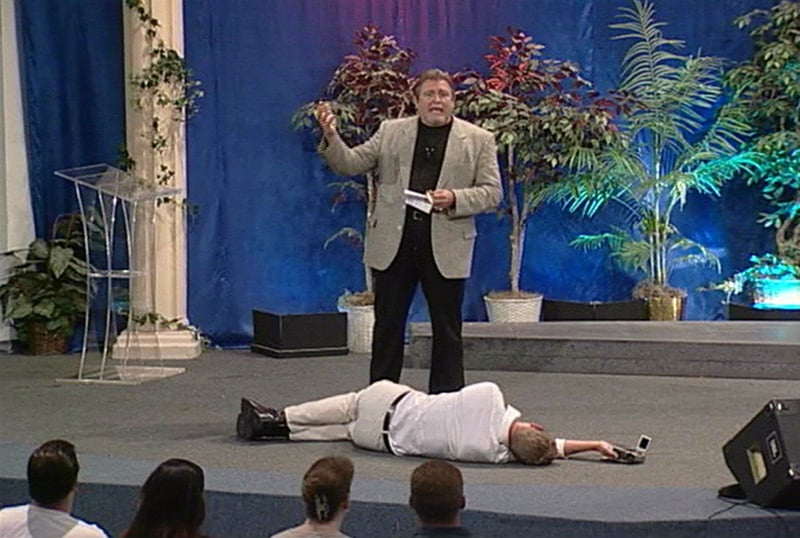
Christian Jankowski, still from The Holy Artwork (2001-2002).
Image: courtesy of Whitney Museum
8. Christian Jankowski
In recovery from its volatile St. Petersburg edition, Manifesta, the famously itinerant European biennial, made two surprising decisions: one, to locate their 2015 show in posh Zurich, and two, to hand over curatorial reins to Finkenweder Art Prize-winning German artist Christian Jankowski. In time, Jankowski announced the decision to organize the exhibition around the idea of work. As a result, each of the show’s 35 commissioned artists will partner with a local worker—such as a teller, a dentist or a cop—in order to realize their artworks. Besides mining a timely topic, Jankowski will also get to massively upscale his own practice when the show opens in mid-June. His art has long emphasized collaboration, interactive participation, and the mass media.
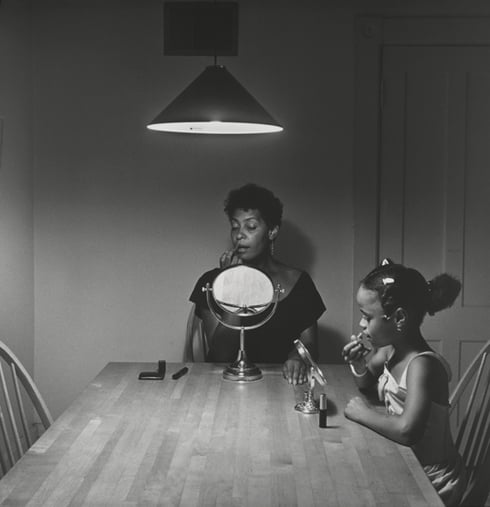
Carrie Mae Weems, Untitled (Woman and daughter with makeup) (from Kitchen Table Series) (1990).
Image: courtesy of the Guggenheim
9. Carrie Mae Weems
Originally conceived as a gift to Barack Obama, who kicked off a spine-tingling rendition of “Amazing Grace” during his eulogy for Reverend Clementa Pinckney after the mass shootings in Charleston, Carrie Mae Weems has designed a moving multimedia artwork for that city’s Spoleto Festival (May 27–June 12). Titled Grace Notes: Reflections for Now, the piece will combine music, song, spoken word, video and the talents of, among others, the poet Aja Monet, artist Theaster Gates, and musicians James Newton, Geri Allen and Craig Harris. According to Spoleto’s website, the immersive experience will ask: “What is the role of grace in the pursuit of democracy?”
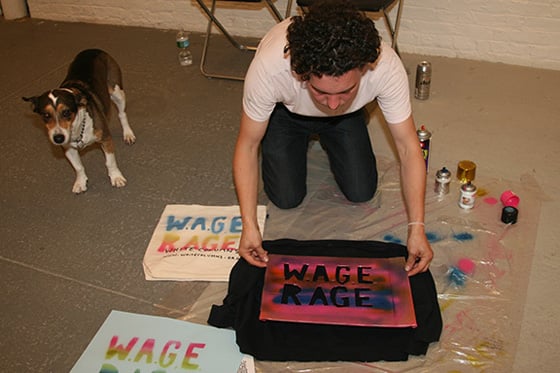
Member of W.A.G.E. (Working Artists in the Greater Economy), at work during “No Soul For Sale” (2009).
10. W.A.G.E. (Working Artists and the Greater Economy)
Begun as a series of informal discussions between artists, performers and curators in 2008, W.A.G.E. has since organized its “art worker” members to rally around a single achievable goal: “the regulated payment of artist fees by nonprofit arts organizations and museums.” But the group has done something greater: They’ve helped foster a climate of artistic cooperation in New York—an effort recognized recently by crucial funding from the Warhol Foundation. In this economy, everyone needs to understand that innovation and collaboration in the arts go hand in hand. Dollar, dollar bill, y’all.